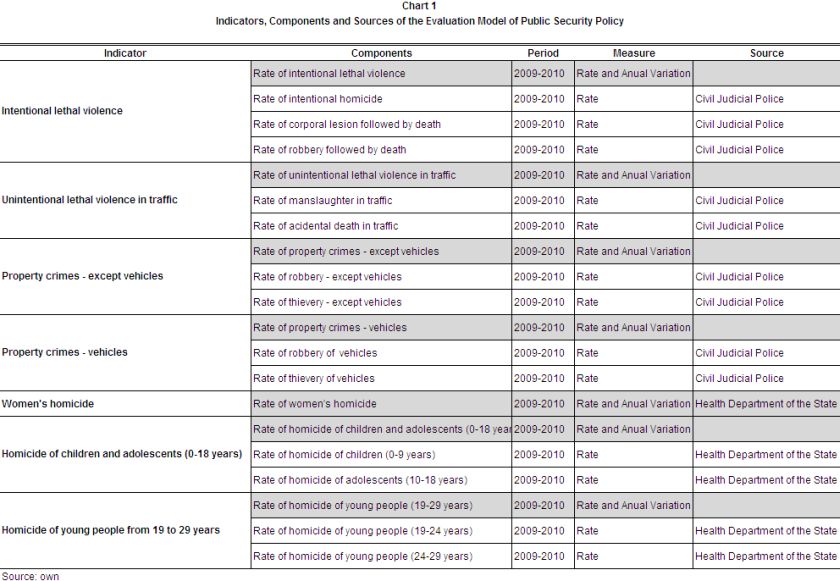1.1 Selected Indicators for the Assessment Model Results
The state government of Mato Grosso, like other Brazilian states, has given high priority of spending to public safety policy, as well as set goals and actions that make it possible to analyze this policy review versus the achievement of objectives.
In addition, an evaluation model should measure results that may be affected by the action of the individuals. It is not reasonable, therefore, to evaluate dimensions that are external to the actions performed by the agent under evaluation. These reasons allow the assessment of safety in the State of Mato Grosso focus on the politics of the state government.
The indicators selected to evaluate the phenomena of crime and victimization in different regions of the state and to compose the panel results are as follows:
* Rate of intentional lethal violence (2009 and 2010)
* Rate of unintentional lethal violence in traffic (2009 and 2010)
* Rate of property crimes - except vehicles (2009 and 2010)
* Rate of crimes against property - vehicles (2009 and 2010)
* Rate of homicide of women (2009 and 2010)
* Rate of killing of children and adolescents 0-18 years (2009 and 2010)
* Rate of homicide of young people 19-29 years (2009 and 2010)
We included indicators of victimization for the total population (such as the intentional lethal violence) and some referred to specific demographic groups in order to understand the risk of victimization in these groups. Table 1, below, shows detailed information about each of the indicators of the evaluation model.
The description and formula for calculating each indicator and its respective component can be found in the Annex Methodology of this report. As can be seen, some indicators are composed of more than one component.
The description of each indicator and its method of calculation are presented in the Methodological Annex.




